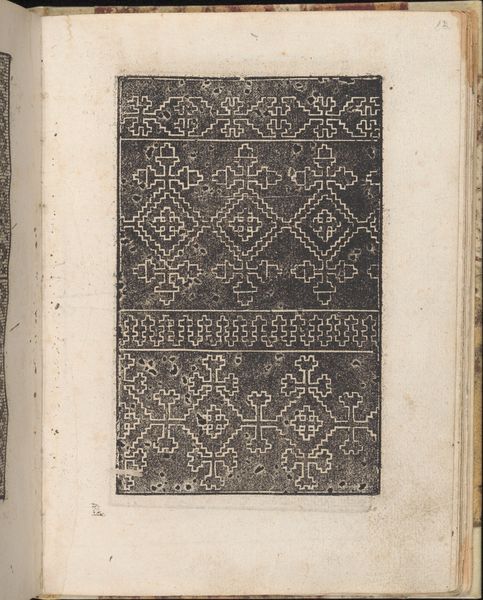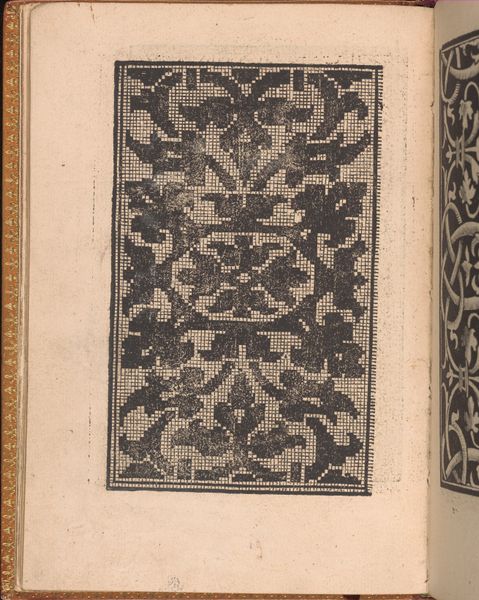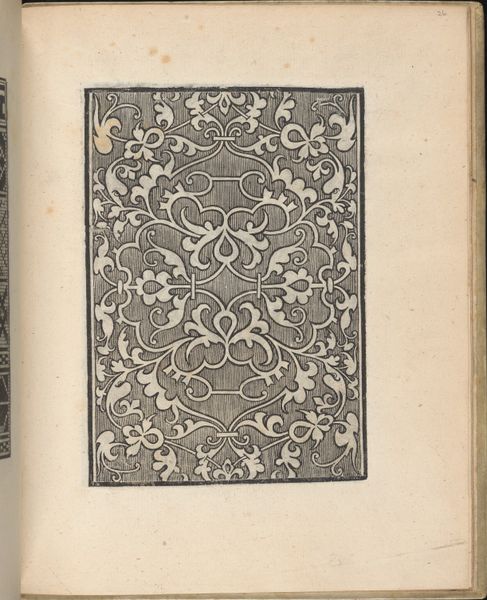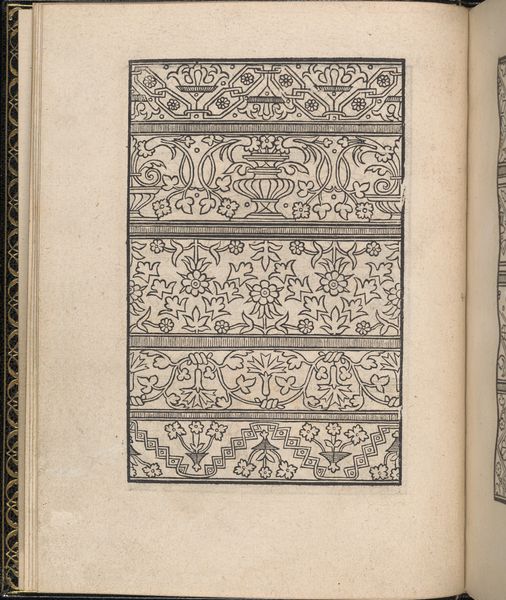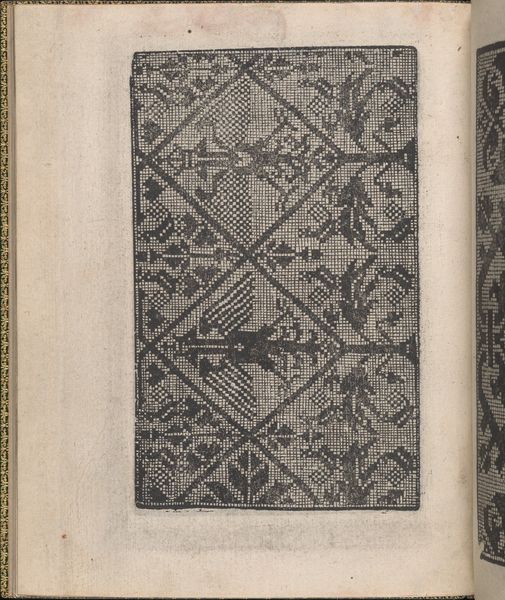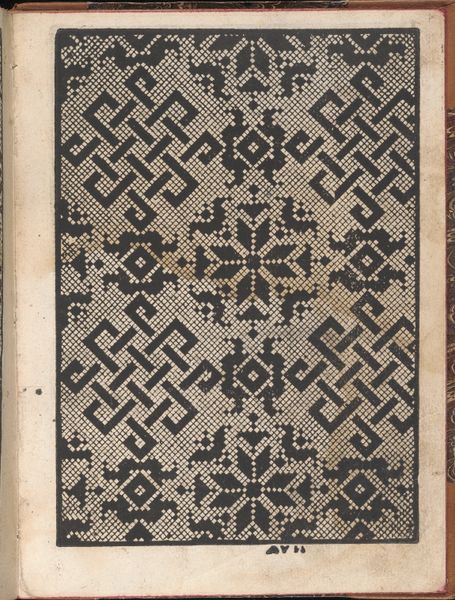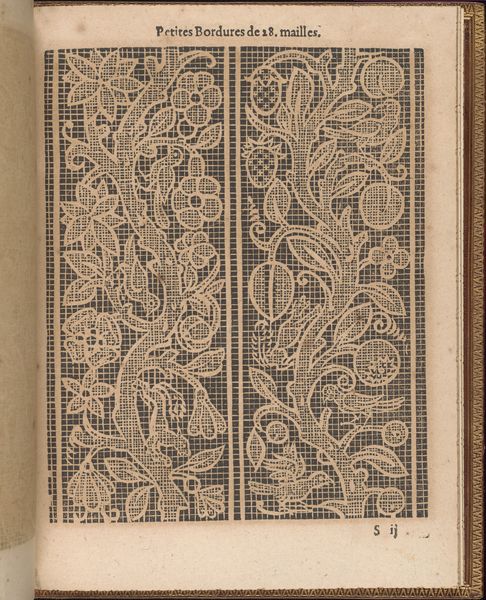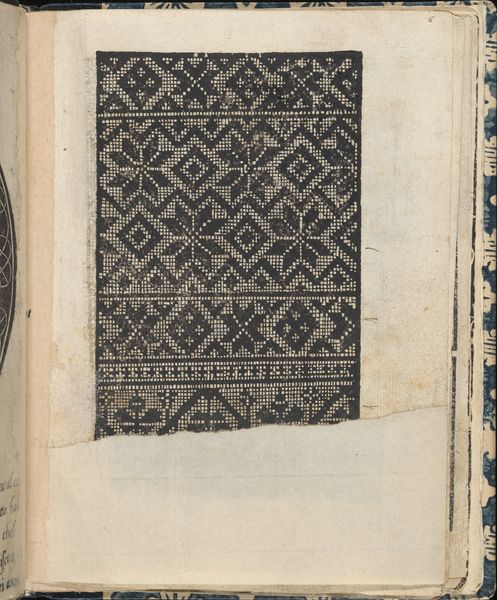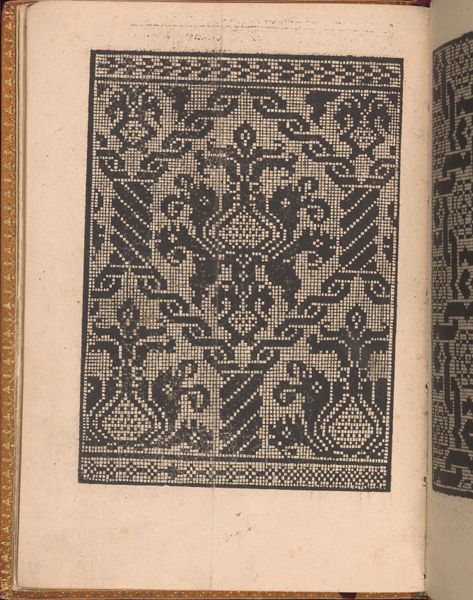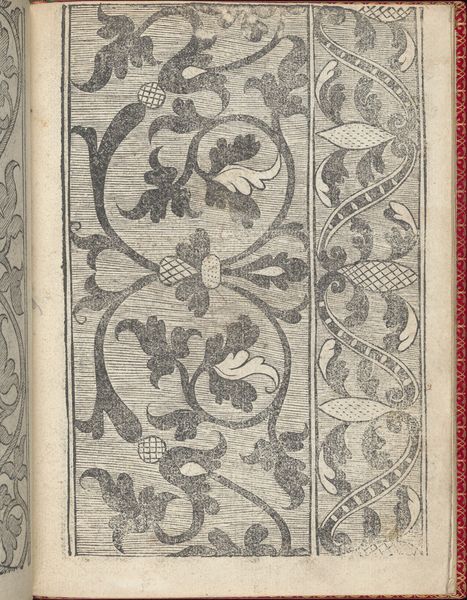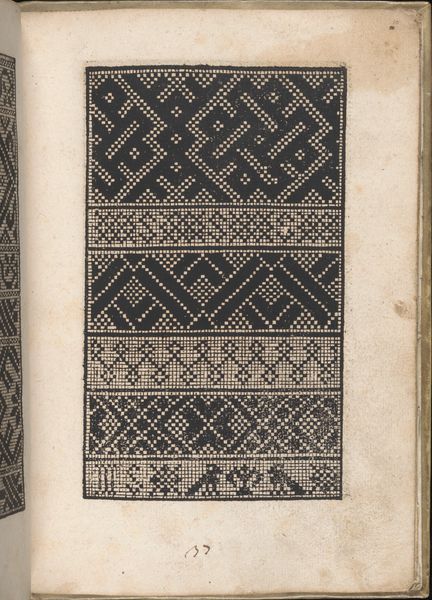
Spechio di pensieri delle belle et Virtudiose donne, page 7 (verso) 1546
0:00
0:00
drawing, print
#
drawing
# print
#
book
#
flower
#
geometric pattern
#
geometric
#
repetition of pattern
#
italian-renaissance
Dimensions: Overall: 8 1/16 x 5 7/8 in. (20.5 x 15 cm)
Copyright: Public Domain
Editor: This is "Spechio di pensieri delle belle et Virtudiose donne, page 7 (verso)" a print and drawing from 1546 by Matteo Pagano. It’s a page from a book, filled with a repeating geometric pattern. The design, rendered in black and white, creates this overwhelming feeling of… visual claustrophobia, almost. What stands out to you? Curator: I see the patterns as echoing a much broader societal structure of prescribed roles for women at that time. “Spechio di pensieri delle belle et Virtudiose donne”—the title itself translates to “Mirror of the Thoughts of Beautiful and Virtuous Women.” The book wasn’t necessarily for *artists*. Rather, the geometric design acted as models for domestic crafts. The book reinforced domestic work, such as needlework and weaving, which were thought of as acceptable venues of artistic expression for upper class women at this historical juncture. Don't you see this as more than just geometry, perhaps it is cultural coding? Editor: So, the intense pattern becomes more significant, almost like a… visual representation of the limitations placed upon women? Curator: Precisely. And think about the *repetition* of the pattern. It highlights the monotonous and repetitive nature of domestic labor. It also subtly reinforces ideals about female virtue which expected a very limited scope of social influence. We can read these patterns, if we apply our social and art histories critically, to illuminate social pressures enacted during this time. Do you agree? Editor: I do. Viewing it as just an aesthetic choice misses so much context! Curator: Exactly! It’s easy to simply categorize these items of material culture without realizing their potential to express broader social tensions or values. Editor: That's a really interesting consideration of gender roles, expectations and the artistic process in 16th century Italy. It completely changes how I see the page now. Curator: It reveals that art and craft during the Renaissance functioned on complex social registers.
Comments
No comments
Be the first to comment and join the conversation on the ultimate creative platform.
